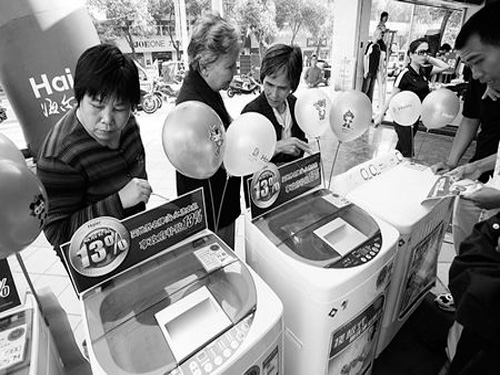 From January to November 2010, the household electrical appliance industry (including white electricity and small household appliances) achieved a total revenue of 847 billion yuan, an increase of 35% from the previous year, and a pre-tax profit of 38.7 billion yuan, a year-on-year increase of 34%. The trend of high-growth profits.
From January to November 2010, the household electrical appliance industry (including white electricity and small household appliances) achieved a total revenue of 847 billion yuan, an increase of 35% from the previous year, and a pre-tax profit of 38.7 billion yuan, a year-on-year increase of 34%. The trend of high-growth profits. From January to November, the home audio-visual equipment industry achieved a total revenue of 402.7 billion yuan, a year-on-year increase of 22%, and a pretax profit of 11.7 billion yuan, a year-on-year increase of 15%. According to industry research agency industry online data, from January to November 2010, the air-conditioning industry achieved cumulative sales of 87.15 million units, an increase of 43%; refrigerator sales totaled 64.60 million units, an increase of 24% year-on-year; cumulative sales of washing machines were 45.43 million units, up Growth of 28%; cumulative sales of LCD TVs totaled 77.13 million units, a year-on-year increase of 35%.
Looking at the year 2010, whether it is white power, black or small household appliances, has maintained the momentum of rapid growth, white electricity continues to exceed expectations, mainly due to lower market expectations at the beginning of the year, that the second half of the growth rate will significantly slow or even negative growth However, the actual situation is that the growth rate has made great strides. The growth rate of Heidian was high and low before the growth rate. The growth rate in the second half of the year slowed down and continued to be lower than expected. The small household appliances industry is more in line with expectations and the growth is rapid and continuous.
In our home appliance domestic demand model, the demand sources for white electricity are divided into four parts: rural areas, new urban areas, urban renewal, and overseas. Judging from the current situation in China, rural demand accounts for 34% and 19% of the total sales of refrigerators and washing machines, and accounts for 7.6% of air conditioners. New urban demand accounts for 22% and 17% of refrigerators and washing machines and 30% of air conditioners.
At present, white and black business companies have extended or expanded their industrial chains through mergers and acquisitions. On the whole, after the high-speed growth and full competition in the early stage of the home appliance industry, the business management of various enterprises has become more stable, the direction of development of the industry has become clearer, and the upgrading of products has accelerated. The industry competition is taking shape, and it will be able to stand on the market in the future. A company that owns brands, technologies and completes the industrial chain.
Since 2010, with the gradual recovery of the economy, retail sales of electronics and home appliances have slowly risen, and wholesale inventories have also increased. The combined forces of the two have led to rapid growth in exports this year. At present, the absolute amount of wholesaler stocks has basically recovered to the level before the international financial crisis, and replenishment stocks have basically come to an end, and exports will return to the scenario of demand-driven demand.
Looking into the future, we believe that endogenous factors will support the growth of the white power industry. It is expected that with the promotion of home appliances to the countryside and the replacement of home appliances, the domestic sales performance will remain stable in 2011. In addition, with the Spring Festival approaching, some home appliances will enter the season of strong sales, home appliance companies will usher in greater business opportunities. From the product point of view, it is expected that sales of air conditioners will increase by 14.6% in the first quarter, refrigerators will increase by 10.8%, washing machines will increase by 12.7%, and LCD TVs will increase by 22%. The long-term growth of the small household appliances industry will be broad, and high-quality companies will continue to expand their product lines and increase the level of 3 or 4 Market sales channels increase market concentration. At the same time, with the gradual improvement of the domestic LCD TV industry chain, LCD TV production will continue to shift to China, and exports will continue to grow.